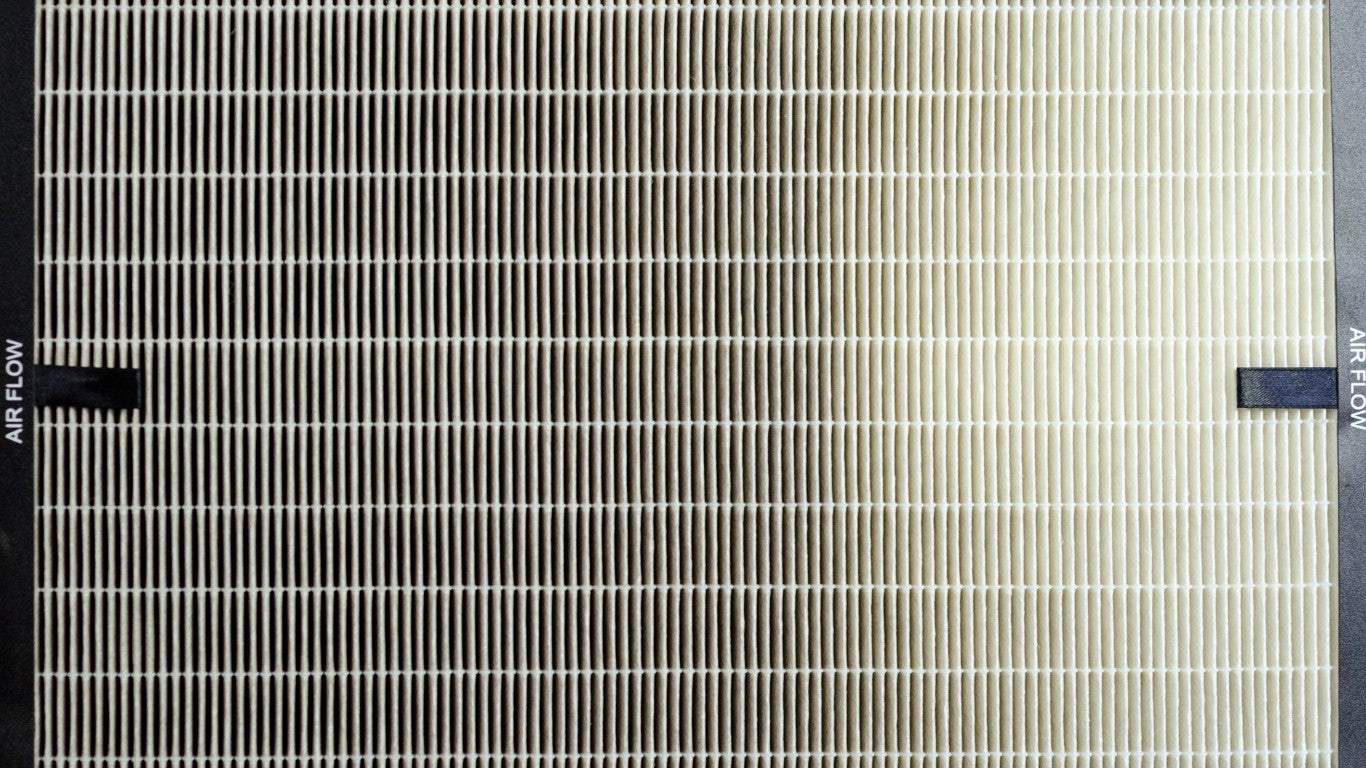
HEPA filters (High-Efficiency Particulate Air) have been one of the most effective ways to turn polluted air into cleaner and healthier air. One of the main claims fueling the HEPA filters adoption being the promise to increase indoor air quality, and improve your overall health.
While it is clear that cleaner air, especially indoors, positively affects our health, there are a few misconceptions about HEPA air purifier standards, which we will try to explain.
HEPA filters: Good but not Great.
Defined by the U.S. Department of Energy, the HEPA standards date back to the 1940s when HEPA filters were mainly used to filter radioactive particles. More recently, they have found applications across a wide variety of fields.
Despite most consumers’ perception of ”HEPA” as a guarantee of efficiency, HEPA filters can be called so only after they pass a test called DOP (Dispersed Oil Particulate). The test is meant to verify the filtration efficiency for particles larger than 0.3 microns.
Imagine a thick mesh of tangled fiber.
As air passes through, most particles are trapped, and indeed HEPA filters are effective at removing particles like pet hair, pollen, or dust mites. Nevertheless, when it comes to much smaller particles such as bacteria and viruses, the limitations of HEPA technology are more than clear.
HEPA air purifier: The issue with small particles
The DOP test does not measure the efficiency of the filters on particles smaller than 0.3 microns, test which all HEPA filters must pass for commercialization. To give a sense of perspective, these “microparticles” actually make up 90% of all airborne particles, which include, among others, these:
- Viruses (0,1-0,5 µm): Viruses are too small to be captured by HEPA filters. Yet a number of HEPA filters claim to protect against viruses.
- Bacteria (1-3µm): Although most bacteria are large enough to be captured, they release toxins once they die on the surface of the filter. These can lead to inflammatory reactions in both non-asthmatic and asthmatic people.
- VOCs (2-3µm): These volatile organic compounds are mostly chemicals from building materials, cleaning products, and cosmetic products in our homes. Some of them can be carcinogenic, which makes them potentially dangerous in certain cases. VOCs are way too small for HEPA filters to capture.
- Mold (4-12µm): Mold spores are large enough to be captured by HEPA filters, but normally proliferate on the surface of the filters. As particles captured by the HEPA filter pile on, they serve as nutrients for the spores, allowing them to grow on the filter membrane and release new spores into the air.
With this we are not saying that HEPA filters can't filter microparticles.
When we observe really small particles movine, when they are extremely small - under 0.3 microns, for instance - they have so little mass that they actually bounce against each other and on other surfaces like a pinball (this phenomena is called Brownian Motion). So this means particles move in random zig-zag patterns.
The inefficiency of HEPA filters and small particles derives from two primary factors:
-
HEPA filters get clogged over time
While this is a small practical problem in theory (after all you just need to replace the filter every few months), in most cases replacing the filter is never done on time. Either because of negligence, the cost associated - which can be up to hundreds of dollars at a time - or simply because the replacement will need to happen to frequently to be effective.
Reducing the air flow over time, this can in turn clog the small gaps in the filter's matrix, decresing the HEPA air purifier's effectiveness at removing all particles - starting from the smalles ones.
-
HEPA filters can spread mold and bacteria
While this issue is strongly connected with the previous one, it is a problem which other air-purification technologies do not face, so treating it separately seems appropriate.
With the filters getting clogged, some of the organic particles like mold spores, dust, dead skin cells, hair, and pollen get trapped in a small surface, where - if exposed to humidity - they can easily start developing microbes and bacteria, spreading them across your home.
As if this wasn't enough, if a HEPA air purifier doesn't get properly mantained and the filter is not changed frequantly enough, the ventilation system itself becomes a sort of airport for the bacteria to spread everywhere.
HEPA filters – Unsustainable and wasteful
On top of the clear shortcomings of HEPA filters on small and micro particles, the vast majority of them are quite power-hungry, requiring quite a lot of energy once the air purifier is running for several hours a day (which is normally the case).
In addition to that, they can generate loud background noise, which is why only a few air purifiers with HEPA filters have a night or sleep mode.
To top it all off, HEPA filters need to be replaced every few months and – apart from the monetary cost – they end-up in landfills as general non-recyclable waste for incineration, only worsening the problem of air pollution they were built to fight against.

Overall, it it is safe to say that HEPA filters can only be a part of the solution for improving indoor air. There are far too many shortcomings, especially when we have newer, more effective technologies readily available that easily cope with most – if not all – of these problems.


Share:
How Circular Economy Can Change The World
5 Hidden Sources of Indoor Air Pollution
1 comment
What kind of air purifier should I get? Don’t they all have hepa filters.